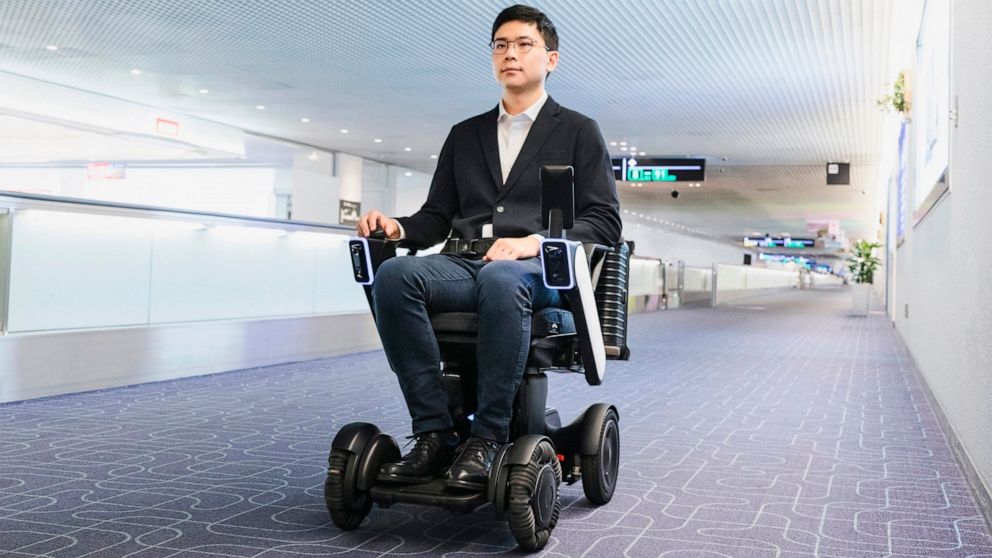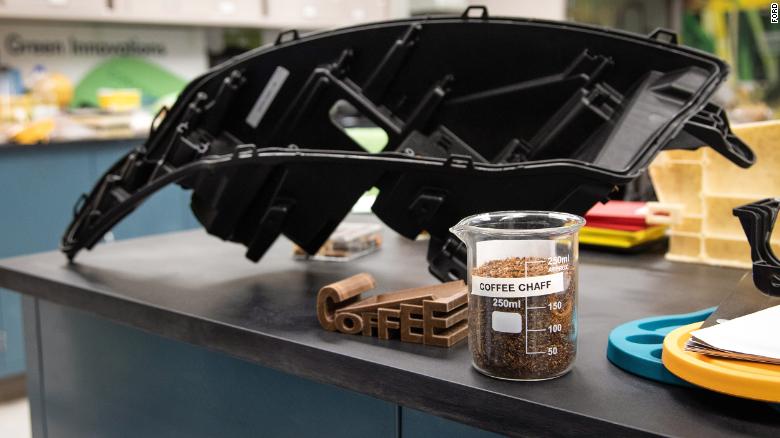City Guide Hotspot
City Guide Hotspot is a platform to explore all kind of information in the city.We offer pertinent guidance and pithy commentary on each entry.
Followers
Search This Blog
Thursday, June 18, 2020
Wednesday, June 17, 2020
GE will make taller wind turbines using 3D-printing
Turbines with a 3D-printed base could be taller than the Seattle Space Needle
GE announced today that it’s developing skyscraper-sized wind turbines with massive 3D-printed bases. The conglomerate plans to work with partners in the construction industry to produce both a printer and materials that could eventually be deployed around the world.
/cdn.vox-cdn.com/uploads/chorus_image/image/66945337/526956316.jpg.0.jpg)
Taller turbines can capitalize on stronger winds at higher altitudes, and the structures support larger blades that generate more power. But building bigger turbines makes transporting the pieces needed to put it together a logistical nightmare. GE hopes to 3D print the base of a turbine wherever they want to place it, so that they won’t need to haul around such a gigantic hunk of concrete or steel. The company says its onshore turbines could reach up to 200 meters tall, which is taller than the Seattle Space Needle and more than double the average height for wind turbines in the US today.
Onshore wind turbines have had a massive growth spurt since the 1980s, when they averaged a height of about 20 meters in the US — not counting the blades. Under ideal conditions, those earlier turbines had a maximum output of about 100kW per turbine. By 2017, those numbers grew to 84 meters tall with an output of more than 2MW (2000kW). Turbines in parts of Europe, where there aren’t as strong winds closer to the ground, can reach greater heights. One of the tallest onshore turbines, in Gaildorf, Germany, towers 178 meters tall. GE wants to go even bigger.
Since it’s one of the world’s largest manufacturers of wind turbines, GE could usher in a whole new era for wind turbines design and construction. But it won’t be the first company to look into 3D-printing for wind energy. Startup RCAM Technologies, with $1.25 million in funding from the California Energy Commission, set out in 2017 to build two turbine towers in a similar fashion — their research is still ongoing. That means GE could be the first to make wind turbines with a 3D-printed base commercially available. The company completed its first prototype in October 2019, and it plans to begin production in 2023.
Monday, June 15, 2020
Personal mobility machine needs no help at Tokyo airport
An autonomous mobility system that works like a wheelchair without anyone pushing it is scuttling around a Tokyo airport to help with social distancing amid the coronavirus pandemic
The personal mobility machine seats one person and runs on its own without crashing, even when people jump out unexpectedly, for about 600 meters (660 yards) on a pre-programmed route at Haneda International Airport, WHILL, the company behind the technology, said Monday.

WHILL Chief Executive Satoshi Sugie said robotics and autonomous driving technology that reduce the need for human labor are a good match for these times of “living with" the coronavirus.
“We are rapidly developing our business in order to help restore a world where people can enjoy moving around with peace of mind,” he told The Associated Press.
The ride lasts just several minutes, traveling from security clearance to the boarding gate at a maximum speed of 3.5 kilometers (2 miles) per hour. But hopes are high that the technology, which uses sensors and cameras, can help in other places, such as hospitals, parks and shopping centers. Labor shortages are a problem in Japan, as well as other nations.
Tests have been carried out at various airports since last year, including John F. Kennedy International Airport in New York, and the company hopes to introduce it at airports around the world.
The person on the machine can start or stop it through a tablet controller. It runs on lithium-ion batteries and returns automatically to where it started.
Anyone needing help walking long distances can use it at Terminal One at Haneda, for what’s referred to as that “last-mile mobility,” according to WHILL, based in Yokohama, Japan.
Although vacuum cleaners, machines carrying things and talking robots are already moving about at airports and other places, personal mobility that runs autonomously is still relatively rare in public places.
South India Pride-Ramraj cotton
An entrepreneur Mr.K.R.Nakarajan the founder of Ramraj cotton who developed this Men's Ethnic Wear in Avinashi,TamilNadu.He had his Vision clear to achieve the goal.

A man who joined in a Company as a sales executive in Tirupur. The company Mantra was
"Quality with out Compromise "
has lead to this Successful path.He started with His investment of R.s.85000 and now it runs with crores n crores of capital.
He came up with the magazine called"Venmai Ennangal" to focus on contemporary social issues.Now Ramraj manufactures 2500 different types of Dhotis and supplies all around the world.
During covid-19 pandemic Ramraj has developed face mask for the protection.
Sunday, June 14, 2020
Wear a T-shirt based on your mood
India's 1'st touch enable T-shirt
India is fastest growing technology hub,Hyderabad.A Hyderabad citizen have designed a T-shirt where u can change the message on T-shirt as you Wish.It is India's 1'st touch enable T-shirt Known as Broadcast Wear.It was developed by Ayyappa Nagubandi who left his Job from USA and returned to India With Good Plan to develop Something new in fashion industry that Indian's can show in emotions without any hesitation.

So he created a technology where the thin LED panel which is sandwich between two layers of the cloth and that is connected to Bluetooth and Battery.An Amazing thing to note here is it is Water Resistant,Wear and Tear Resistant,Shock resistance.It is 100% safe.And there are various T-Shirts produced by them Which are Fitness T-Shirt for Calculating Calories burned ,Number of Steps climbed etc,...Next comes Cycling Jersey and now T-shirts become Fitness App.It also acts as indicator for Left and Right turn according to the Cyclist. It is Combination of Technology and Comfort.Fact is 90% of technology used is from Hyderabad and India.
Saturday, June 13, 2020
Starbucks will now let baristas wear 'Black Lives Matter' apparel after backlash
The coffee giant sparked a backlash after denying staffers who wanted to display their support for the movement.

Starbucks said on Friday that employees would be allowed to wear Black Lives Matter shirts and pins, a sudden reversal of a company policy that had banned the phrase because it could “amplify divisiveness.”
Amid social media backlash to a policy, the coffee chain also declared that it would provide 250,000 Starbucks-branded Black Lives Matter shirts for baristas and other employees who want them.
“Starbucks stands in solidarity with our Black partners, community and customers, and understands the desire to express themselves,” Starbucks said in a statement. “We continue to listen to our partners (employees) about how they want to take a stand for justice, while proudly wearing the green apron and standing united together.”
Friday, June 12, 2020
Ford and McDonald's are turning coffee waste into car parts
Ford has tapped McDonald's to help it turn coffee parts into car parts.
Starting this year, Ford is incorporating coffee chaff — coffee bean skin that comes off during the roasting process — into the plastic headlamp housing used in some cars. It's asked McDonald's, which doesn't roast its own coffee, to connect it with suppliers.

In recent years, as consumers become more concerned about plastic pollution and carbon emissions, companies have made sweeping commitments to reduce their impacts on the environment. They've also been developing innovative, sustainable materials to build consumer products.
Traditionally, Ford uses plastic and talc to make its headlamp housing, explained Debbie Miewelski, senior technical leader of materials sustainability for Ford. The coffee version is more sustainable because it's lighter and doesn't use the talc which, as a mineral, isn't renewable.
Coffee chaff, on the other hand, is widely available, Miewelski said, and much of it goes to waste. Eventually, Ford hopes to incorporate the material into more cars and use it for more parts.
Ford decided to work with coffee chaff a few years ago. But it's been experimenting with organic materials for over a decade.

The auto company has been using soy-based foam in its cushions since 2011. It also uses waste from wheat, coconut, tomato and other plants in its cars in order to help meet some of its sustainability goals, which include using more renewable materials.
"If you came to our lab, it looks somewhere between a landfill and a farm," Miewelski said. Her team decided to examine the potential of coffee because the beverage is so ubiquitous.
Once the Ford team figured out how coffee chaff could be used to build car parts, it reached out to McDonald's because of the restaurant chain's scale and its comparable sustainability goals, Miewelski said. Like Ford, McDonald's also wants to incorporate renewable and recycled materials into its products.
The partnership between Ford and McDonald's is an example of how brands with distinct sustainability initiatives can work together.
McDonald's recently achieved its goal of sourcing all of its US coffee sustainably, one year ahead of schedule, and is also working with competitors to develop more environmentally friendly coffee cups. When Ford approached it about the coffee chaff product a few years ago, the company was able to consider another way to make its coffee greener, said Ian Olson, senior director of global sustainability at McDonald's.
"We've conventionally thought of collaborations as within the food industry," Olson said. The Ford partnership can help McDonald's see "what kind of larger impacts are possible," when it works with a company in another sector.
"This is just scratching the surface of trying to understand what's possible," Olson said.
Subscribe to:
Comments (Atom)
-
As Deforestation are increasing globally .There are lot of effort taken by government and NGO's to preserve nature.O...
-
IDLY: Most favorite South-Indian dish ever. Do u believe!!! 1 rs idly along with care by 82 old granny in coimba...



